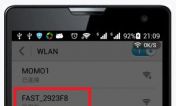电脑ip地址是什么(电脑IP地址是什么)
最后更新:2024-03-25 01:45:36 手机定位技术交流文章
ip地址是指什么
IP地址 IP地址是分配给连接到计算机网络的每个设备的电子地址。IP首字母缩写词代表 Internet协议,通常由用户的Internet服务提供商 (ISP) 发布,是Internet将用户的搜索和查询的数据和结果发回的地址。 通常,IP地址以分层方式分配。它从国际数字分配机构 (IANA) 开始,IANA将IP地址分块分配给不同的区域互联网注册机构。每个区域互联网注册机构进一步将较小的IP地址块分配给国家互联网注册机构。接下来,每个国家的互联网注册机构再将IP地址块分配给各个ISP提供商。
所谓IP地址其实是基于TCP/IP的理论所规定的网络地址,简单的理解可以认为是您在网络上的门牌号码。TCP/IP(TransmissionControlProtocol/InternetProtocol的简写,中文译名为传输控制协议/互联网络协议)协议是Internet最基本的协议,简单地说,就是由底层的IP协议和TCP协议组成的。TCP/IP是国际上通用的网络协议,也是用于互联网的第一套协议,也正因为有了TCP/IP标准,世界各地的电脑等设备能够链接到互联网上,并互相访问及共享资源。 在Internet没有形成之前,各个地方已经建立了很多小型的网络,称为局域网,Internet的中文意义是“互联网”,它实际上就是将全球各地的局域网链接起来而形成的一个“可以互相链接的网络(即互联网)”。然而,在链接之前的各式各样的局域网却存在不同的网络结构和数据传输规则,将这些小网链接起来后各网之间要通过什么样的规则来传输数据呢?这就像世界上有很多个国家,各个国家的人说各自的语言,世界上任意两个人要怎样才能互相沟通呢?如果全世界的人都能够说同一种语言(即世界语),这个问题不就解决了吗?TCP/IP协议正是Internet上的“世界语”。而IP地址就是TCP/IP协议所规定的“门牌号码”。 看自己IP地址 http://www.ip138.com/
所谓IP地址其实是基于TCP/IP的理论所规定的网络地址,简单的理解可以认为是您在网络上的门牌号码。TCP/IP(TransmissionControlProtocol/InternetProtocol的简写,中文译名为传输控制协议/互联网络协议)协议是Internet最基本的协议,简单地说,就是由底层的IP协议和TCP协议组成的。TCP/IP是国际上通用的网络协议,也是用于互联网的第一套协议,也正因为有了TCP/IP标准,世界各地的电脑等设备能够链接到互联网上,并互相访问及共享资源。 在Internet没有形成之前,各个地方已经建立了很多小型的网络,称为局域网,Internet的中文意义是“互联网”,它实际上就是将全球各地的局域网链接起来而形成的一个“可以互相链接的网络(即互联网)”。然而,在链接之前的各式各样的局域网却存在不同的网络结构和数据传输规则,将这些小网链接起来后各网之间要通过什么样的规则来传输数据呢?这就像世界上有很多个国家,各个国家的人说各自的语言,世界上任意两个人要怎样才能互相沟通呢?如果全世界的人都能够说同一种语言(即世界语),这个问题不就解决了吗?TCP/IP协议正是Internet上的“世界语”。而IP地址就是TCP/IP协议所规定的“门牌号码”。 看自己IP地址 http://www.ip138.com/

哪个是电脑的ip地址
查看ip地址 1、输入【ipconfig /all】就可以显示本机IP地址;2、使用组合键【Win】+【R】调出【运行】,输入CMD车,打开【命令提示符】; 3、在命令提示符下输入【ipconfig /all】,其中显示的IPV4地址就是本机的IP地址,当然这个是使用路由器获得的路由器IP地址。

IP地址是什么意思?
IP地址(Internet Protocol Address)是指互联网协议地址,又译为网际协议地址。 IP地址是IP协议提供的一种统一的地址格式,它为互联网上的每一个网络和每一台主机分配一个逻辑地址,以此来屏蔽物理地址的差异。
IP地址是指互联网协议地址(英语:Internet Protocol Address,又译为网际协议地址),是IP Address的缩写。IP地址是IP协议提供的一种统一的地址格式,它为互联网上的每一个网络和每一台主机分配一个逻辑地址,以此来屏蔽物理地址的差异。扩展资料IP地址被用来给Internet上的电脑一个编号。大家日常见到的情况是每台联网的PC上都需要有IP地址,才能正常通信。我们可以把“个人电脑”比作“一台电话”,那么“IP地址”就相当于“电话号码”,而Internet中的路由器,就相当于电信局的“程控式交换机”。IP地址是一个32位的二进制数,通常被分割为4个“8位二进制数”(也就是4个字节)。IP地址通常用“点分十进制”表示成(a.b.c.d)的形式,其中,a,b,c,d都是0~255之间的十进制整数。IP地址编址方案:IP地址编址方案将IP地址空间划分为A、B、C、D、E五类,其中A、B、C是基本类,D、E类作为多播和保留使用。IPV4就是有4段数字,每一段最大不超过255。由于互联网的蓬勃发展,IP位址的需求量愈来愈大,使得IP位址的发放愈趋严格,各项资料显示全球IPv4位址可能在2005至2010年间。参考资料IP地址_百度百科
IP地址是一种在Internet上的给主机编址的方式,也称为网际协议地址。IP地址是IP协议提供的一种统一的地址格式,它为互联网上的每一个网络和每一台主机分配一个逻辑地址,以此来屏蔽物理地址的差异。常见的IP地址,分为IPv4与IPv6两大类。目前还有些ip代理软件,但大部分都收费。扩展资料:IP网络段IP地址根据网络ID的不同分为5种类型,A类地址、B类地址、C类地址、D类地址和E类地址。查找ip有个cmd命令:tracert 后面加ip地址,可以查所经过的路由!局域网的IP在一个局域网中,有两个IP地址比较特殊,一个是网络号,一个是广播地址。网络号是用于三层寻址的地址,它代表了整个网络本身;另一个是广播地址,它代表了网络全部的主机。网络号是网段中的第一个地址,广播地址是网段中的最后一个地址,这两个地址是不能配置在计算机主机上的。例如在192.168.0.0这样的网段中,网络号是192.168.0.0,广播地址是192.168.0.255。因此,在一个局域网中,能配置在计算机中的地址比网段内的地址要少两个(网络号、广播地址),这些地址称之为主机地址。在上面的例子中,主机地址就只有192.168.0.1至192.168.0.254可以配置在计算机上了。参考资料:百度百科《IP地址》
IP地址是指互联网协议地址(英语:Internet Protocol Address,又译为网际协议地址),是IP Address的缩写。IP地址是IP协议提供的一种统一的地址格式,它为互联网上的每一个网络和每一台主机分配一个逻辑地址,以此来屏蔽物理地址的差异。...
IP地址是指互联网协议地址(英语:Internet Protocol Address,又译为网际协议地址),是IP Address的缩写。IP地址是IP协议提供的一种统一的地址格式,它为互联网上的每一个网络和每一台主机分配一个逻辑地址,以此来屏蔽物理地址的差异。扩展资料IP地址被用来给Internet上的电脑一个编号。大家日常见到的情况是每台联网的PC上都需要有IP地址,才能正常通信。我们可以把“个人电脑”比作“一台电话”,那么“IP地址”就相当于“电话号码”,而Internet中的路由器,就相当于电信局的“程控式交换机”。IP地址是一个32位的二进制数,通常被分割为4个“8位二进制数”(也就是4个字节)。IP地址通常用“点分十进制”表示成(a.b.c.d)的形式,其中,a,b,c,d都是0~255之间的十进制整数。IP地址编址方案:IP地址编址方案将IP地址空间划分为A、B、C、D、E五类,其中A、B、C是基本类,D、E类作为多播和保留使用。IPV4就是有4段数字,每一段最大不超过255。由于互联网的蓬勃发展,IP位址的需求量愈来愈大,使得IP位址的发放愈趋严格,各项资料显示全球IPv4位址可能在2005至2010年间。参考资料IP地址_百度百科
IP地址是一种在Internet上的给主机编址的方式,也称为网际协议地址。IP地址是IP协议提供的一种统一的地址格式,它为互联网上的每一个网络和每一台主机分配一个逻辑地址,以此来屏蔽物理地址的差异。常见的IP地址,分为IPv4与IPv6两大类。目前还有些ip代理软件,但大部分都收费。扩展资料:IP网络段IP地址根据网络ID的不同分为5种类型,A类地址、B类地址、C类地址、D类地址和E类地址。查找ip有个cmd命令:tracert 后面加ip地址,可以查所经过的路由!局域网的IP在一个局域网中,有两个IP地址比较特殊,一个是网络号,一个是广播地址。网络号是用于三层寻址的地址,它代表了整个网络本身;另一个是广播地址,它代表了网络全部的主机。网络号是网段中的第一个地址,广播地址是网段中的最后一个地址,这两个地址是不能配置在计算机主机上的。例如在192.168.0.0这样的网段中,网络号是192.168.0.0,广播地址是192.168.0.255。因此,在一个局域网中,能配置在计算机中的地址比网段内的地址要少两个(网络号、广播地址),这些地址称之为主机地址。在上面的例子中,主机地址就只有192.168.0.1至192.168.0.254可以配置在计算机上了。参考资料:百度百科《IP地址》
IP地址是指互联网协议地址(英语:Internet Protocol Address,又译为网际协议地址),是IP Address的缩写。IP地址是IP协议提供的一种统一的地址格式,它为互联网上的每一个网络和每一台主机分配一个逻辑地址,以此来屏蔽物理地址的差异。...

什么是IP地址
IP地址称作网络协议地址,是分配给主机的一个32位地址,由4个字节组成,分为动态IP地址和静态IP地址两种。接下来我为大家整理了什么是IP地址,希望对你有帮助哦!IP地址(Internet Protocol Address)是一种在Internet上的给主机编址的方式,也称为网际协议地址。由32位二进制数组成,为便于使用,常以XXX.XXX.XXX.XXX形式表现,每组XXX代表小于等于255的10进制数。例如202.96.155.9。Internet中,IP地址是唯一的。目前IP技术可能使用的IP地址最多可有约42亿个。骤看可能觉得很难会用尽,但由于早期编码上的问题,使很多编码实际上被丢空或不能使用。加上因特网的普及,使每个家庭都至少有一部电脑,连同公司的电脑,以及连接每个网络的服务器,长此下去,专家担心随着Internet的发展,将不够用。所以相应的科研组织正在研究128位的IP地址,其IP地址数量最高可达 3.402823669 × 1038 个,地球上的每一粒沙子都可以拥有自己的IP地址,这种新版的IP地址技术叫IPv6。An IP address (Internet Protocol address) is a unique number that devices use in order to identify and communicate with each other on a network utilizing the Internet Protocol standard. Any participating device — including routers, computers, time-servers, internet FAX machines, and some telephones — must have its own unique address. This allows information passed onwards on behalf of the sender to indicate where to send it next, and for the receiver of the information to know that it is the intended destination.The numbers currently used in IP addresses range from 1.0.0.0 to 255.255.255.255, though some of these values are reserved for specific purposes. This does not provide enough possibilities for every internet device to have its own permanent number. Subnet routing, Network Address Translation and the Dynamic Host Configuration Protocol (DHCP) server all allow local networks to use the same IP addresses as other networks elsewhere though both are connected to the Internet. Devices such as network printers, web servers and email servers are often allocated static IP addresses so they can always be found.IP addresses are conceptually similar to phone numbers, except they are used in LANs (Local Area Network), WANs (Wide Area Network), or the Internet. Because the numbers are not easy for humans to remember, the Domain Name System provides a service analogous to an address book lookup called "domain name resolution" or "name resolution". Special DNS servers on the internet are dedicated to performing the translation from a domain name to an IP address and vice versa.More detailThe Internet Protocol (IP) knows each logical host interface by a number, the IP address. On any given network, this number must be unique among all the host interfaces that communicate through this network. Users of the Internet are sometimes given a host name in addition to their numerical IP address by their Internet service provider.The IP addresses of users browsing the World Wide Web are used to enable communications with the server of the Web site. Also, it is usually in the header of email messages one sends. In fact, for all programs that utilize the TCP/IP protocol, the sender IP address and destination IP address are required in order to establish communications and send data.Depending on one's Internet connection the IP address can be the same every time one connects (called a static IP address), or different every time one connects, (called a dynamic IP address). In order to use a dynamic IP address, there must exist a server which can provide the address. IP addresses are usually given out through a server service called DHCP or the Dynamic Host Configuration Protocol. If a static address is used, it must be manually programmed into parameters of the device's network interface.Internet addresses are needed not only for unique enumeration of hosted interfaces, but also for routing purposes, therefore a high fraction of them are always unused or reserved.The unique nature of IP addresses makes it possible in many situations to track which computer — and by extension, which person — has sent a message or engaged in some other activity on the Internet. This information has been used by law enforcement authorities to identify criminal suspects; however dynamically-assigned IP addresses can make this difficult.IP version 4AddressingIn version 4 of the Internet protocol (IPv4), the current standard protocol for the Internet, IP addresses consist of 32 bits, which makes for 4,294,967,296 (over 4 billion) unique host interface addresses in theory. If all of these were used, that would be around one IP address per 21.3 square meters, or 70 square feet, of land. In practice, because addresses are allocated in blocks, many unused addresses are unavailable (much like unused phone numbers in a sparsely-populated area code), so that there is some pressure to extend the address range via IP version 6 (see below).IPv4 addresses are commonly expressed as a dotted quad, four octets (8 bits) separated by periods. The host known as www.wikipedia.org currently has the number 3482223596, written as 207.142.131.236 in base-256: 3482223596 equals 207×2563 142×2562 131×2561 236×2560. (Resolving the name www.wikipedia.org to its associated number is handled by Domain Name System servers.)IPv4 addresses were originally divided into two parts: the network and the host. A later change increased that to three parts: the network, the subnetwork, and the host, in that order. However, with the advent of classless inter-domain routing (CIDR), this distinction is no longer meaningful, and the address can have an arbitrary number of levels of hierarchy. (Technically, this was already true any time after the advent of subnets, since a site could elect to have more than one level of subnetting inside a network number.)AssignmentEach interface of a device is assigned, at least theoretically, a unique IP address. In practice, some interfaces may be unnumbered, and many addresses are not globally unique.The actual assignment of an address is not arbitrary. The fundamental principle of routing, that addresses encode information about a device's location within a network, implies that an address assigned to one part of a network will not function in another part of the network. A hierarchical structure, standardized by CIDR and overseen by the Internet Assigned Numbers Authority (IANA) and its Regional Internet Registries (RIRs), manages the assignment of Internet address worldwide. Each RIR maintains a publically searchable WHOIS database that provides information about IP address assignments; information from these databases plays a central role in numerous tools which attempt to locate IP addresses geographically.ExhaustionSome private IP address space has been allocated via RFC 1918. This means the addresses are available for any use by anyone and therefore the same RFC 1918 IP addresses can be reused. However they are not routable on the Internet. They are used extensively due to the shortage of registerable addresses. Network address translation (NAT) is required to connect those networks to the Internet.While a number of measures have been taken to conserve the limited existing IPv4 address space (such as the use of NAT and Private Addressing), the number of 32-bit IP addresses is not sufficient to accommodate the long-term growth of the Internet. For this reason, the plan is that the Internet 128-bit IPv6 addressing scheme will be adopted over the next 5 to 15 years.IP version 5What would be considered IPv5 existed only as an experimental non-IP real time streaming protocol called ST2, described in RFC 1819. In keeping with standard UNIX release conventions, all odd-numbered versions are considered experimental, and this version was never intended to be implemented; the protocol was not abandoned. RSVP has replaced it to some degree.IP version 6In IPv6, the new (but not yet widely deployed) standard protocol for the Internet, addresses are 128 bits wide, which, even with generous assignment of netblocks, should suffice for the foreseeable future. In theory, there would be exactly 2128, or about 3.403 × 1038 unique host interface addresses. If the earth were made entirely out of 1 cubic millimeter grains of sand, then you could give a unique address to each grain in 300 million planets the size of the earth. This large address space will be sparsely populated, which makes it possible to again encode more routing information into the addresses themselves.AddressingA version 6 address is written as eight 4-digit hexadecimal numbers separated by colons. For readability, addresses may be shortened in two ways. Within each colon-delimited section, leading zeroes may be truncated. Secondly, one string of zeroes (and only one) may be replaced with two colons (::). For example, all of the following addresses are equivalent:1080:0000:0000:0000:0000:0034:0000:417A1080:0:0:0:0:34:0:417A1080::34:0:417AGlobal unicast IPv6 addresses are constructed as two parts: a 64-bit routing part followed by a 64-bit host identifier.Netblocks are specified as in the modern alternative for IPv4: network number, followed by a slash, and the number of relevant bits of the network number (in decimal). Example: 12AB::CD30:0:0:0:0/60 includes all addresses starting with 12AB00000000CD3.IPv6 has many improvements over IPv4 other than just bigger address space, including autorenumbering and mandatory support for IPsec.

电脑上的IP地址是什么意思啊
所谓IP地址就是给每个连接在Internet上的主机分配的一个32bit地址。 在Internet上有千百万台主机,为了区分这些主机,人们给每台主机都分配了一个专门的地址,称为IP地址。通过IP地址就可以访问到每一台主机。IP地址由4部分数字组成,每部分数字对应于8位二进制数字,各部分之间用小数点分开。如某一台主机的IP地址为:211.152.65.112,InternetIP地址由NIC(InternetNetworkInformationCenter)统一负责全球地址的规划、管理;同时由InterNIC、APNIC、RIPE三大网络信息中心具体负责美国及其它地区的IP地址分配。固定IP:固定IP地址是长期固定分配给一台计算机使用的IP地址,一般是特殊的服务器才拥有固定IP地址。动态IP:因为IP地址资源非常短缺,通过电话拨号上网或普通宽带上网用户一般不具备固定IP地址,而是由ISP动态分配暂时的一个IP地址。普通人一般不需要去了解动态IP地址,这些都是计算机系统自动完成的。公有地址(Publicaddress)由InterNIC(InternetNetworkInformationCenter因特网信息中心)负责。这些IP地址分配给注册并向InterNIC提出申请的组织机构。通过它直接访问因特网。私有地址(Privateaddress)属于非注册地址,专门为组织机构内部使用。以下列出留用的内部私有地址A类10.0.0.0--10.255.255.255B类172.16.0.0--172.31.255.255C类 192.168.0.0--192.168.255.255
IP地址分类 定如下:32位地址域中第一个8位为网络标识,其中第0位为0,表示A类地址,其余 24位均为主机标识,由该网的管理者自行分配。B类分配给中等规模的网络,每个B类地址的网络具有较多的主机,规定: 32位地址域中前二个8位为网络标识,其中前二位为10,表示B类地址,其余 16位均为主机标识,由该网的管理者自行分配。C类分配给小规模的网络,每个C地址的网络只有少量主机,规定: 32位地址域中前三个8位为网络标识,其中前三位为110,表示C类地址,其余 8位均为主机标识,由该网的管理者自行分配。IP地址类IETF将IP地址分为成三个普通类(加上两个特殊类)。IP地址被分成四个代点的十进制八位组,类与类之间的区别在于当寻址网络与主机对立时,分配给寻址网络的八位组的方式不同。这种分配方式称作第一个八位组规则。世界上的任何一个路由器都能够阅读IP地址的第一个八位组,并且知道哪能些位翻译成网络地址的一部分,哪能些番译成主机地址的一部分。如果路由器不能进行这样的区分,那为INTERNET根本不能工作。大部分网络使用B类或C类地址,每一个类的第一个八位组的范围如下:1、0-—127。A类 网络号码范围是0.0.0.0---127.0.0.0,用于128个网络。但网络不能近由0组成且127。0。0。0保留用于回路。剩下的126个网络,1到126,共有16777214个可能的主机地址(16777216减2)A类 网络 —主机——主机-—主机0-127 12700 02、128—191。B类,网络号码范围是128。0。0。0--191。254。0。0 用于16256个网络。共有65534个可能的主机地址B类 网络---网络----主机--主机128—191128 1230 03、192--223。C类,网络号码范围是192。0。0。0--223。254。254。0,用于2064512个网络。共有254个可能的主机地址C类 网络---网络----网络---主机192--2231920 0 0所有的网络空间计算都必须“减2”,这是因为要扣除两个保留地址:“0”给这个网络255给广播。地址1-254分配给主机,第一个八位组号码224-254保留给在这儿未讨论的特殊类(组播和调查)。通过上述讨论,可以知道只有很少数非常大的组织才能拥有A类地址,实际上只有126个这样的组织,我们中大多数用的是B类和C类IP地址与INTERNET相连。注意: 不要忘记网络的严格定义是一个LAN段,一个单独,共享的访问介质。IP寻址语境中网络一词的意义也如此。网络(或者LAN段)也标识为网络接口(或简称接口),因为一个网络只可以与一个路由器的接口连接。例如,福特汔车公司的内联网络可能被子其雇员称为一个网络,但是福特的网络管理者必须为连接到公司路由器接口上的成千上万的各个网络(LAN段)分配惟一的IP地址。
IP地址分类 定如下:32位地址域中第一个8位为网络标识,其中第0位为0,表示A类地址,其余 24位均为主机标识,由该网的管理者自行分配。B类分配给中等规模的网络,每个B类地址的网络具有较多的主机,规定: 32位地址域中前二个8位为网络标识,其中前二位为10,表示B类地址,其余 16位均为主机标识,由该网的管理者自行分配。C类分配给小规模的网络,每个C地址的网络只有少量主机,规定: 32位地址域中前三个8位为网络标识,其中前三位为110,表示C类地址,其余 8位均为主机标识,由该网的管理者自行分配。IP地址类IETF将IP地址分为成三个普通类(加上两个特殊类)。IP地址被分成四个代点的十进制八位组,类与类之间的区别在于当寻址网络与主机对立时,分配给寻址网络的八位组的方式不同。这种分配方式称作第一个八位组规则。世界上的任何一个路由器都能够阅读IP地址的第一个八位组,并且知道哪能些位翻译成网络地址的一部分,哪能些番译成主机地址的一部分。如果路由器不能进行这样的区分,那为INTERNET根本不能工作。大部分网络使用B类或C类地址,每一个类的第一个八位组的范围如下:1、0-—127。A类 网络号码范围是0.0.0.0---127.0.0.0,用于128个网络。但网络不能近由0组成且127。0。0。0保留用于回路。剩下的126个网络,1到126,共有16777214个可能的主机地址(16777216减2)A类 网络 —主机——主机-—主机0-127 12700 02、128—191。B类,网络号码范围是128。0。0。0--191。254。0。0 用于16256个网络。共有65534个可能的主机地址B类 网络---网络----主机--主机128—191128 1230 03、192--223。C类,网络号码范围是192。0。0。0--223。254。254。0,用于2064512个网络。共有254个可能的主机地址C类 网络---网络----网络---主机192--2231920 0 0所有的网络空间计算都必须“减2”,这是因为要扣除两个保留地址:“0”给这个网络255给广播。地址1-254分配给主机,第一个八位组号码224-254保留给在这儿未讨论的特殊类(组播和调查)。通过上述讨论,可以知道只有很少数非常大的组织才能拥有A类地址,实际上只有126个这样的组织,我们中大多数用的是B类和C类IP地址与INTERNET相连。注意: 不要忘记网络的严格定义是一个LAN段,一个单独,共享的访问介质。IP寻址语境中网络一词的意义也如此。网络(或者LAN段)也标识为网络接口(或简称接口),因为一个网络只可以与一个路由器的接口连接。例如,福特汔车公司的内联网络可能被子其雇员称为一个网络,但是福特的网络管理者必须为连接到公司路由器接口上的成千上万的各个网络(LAN段)分配惟一的IP地址。

本文由 在线网速测试 整理编辑,转载请注明出处。

